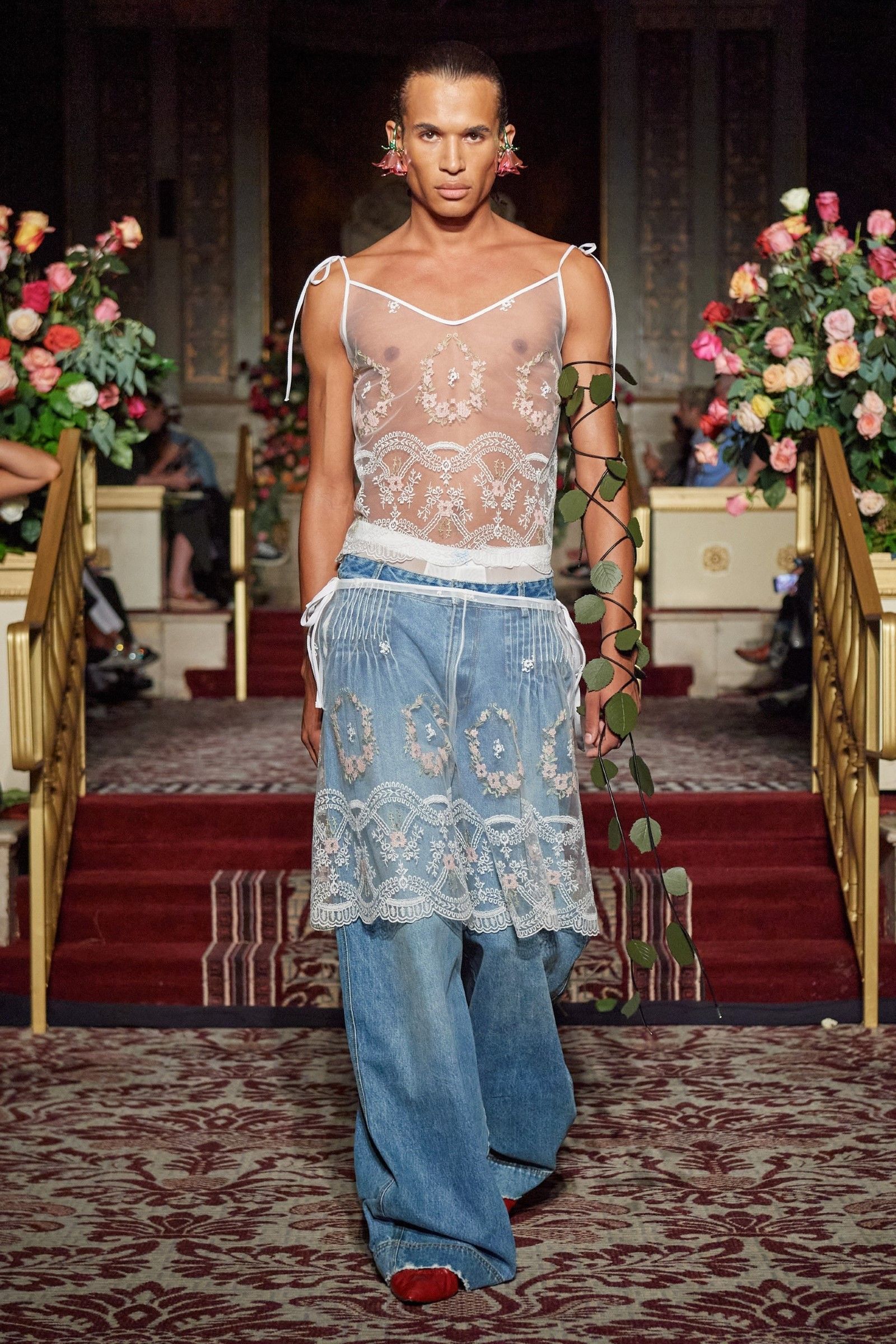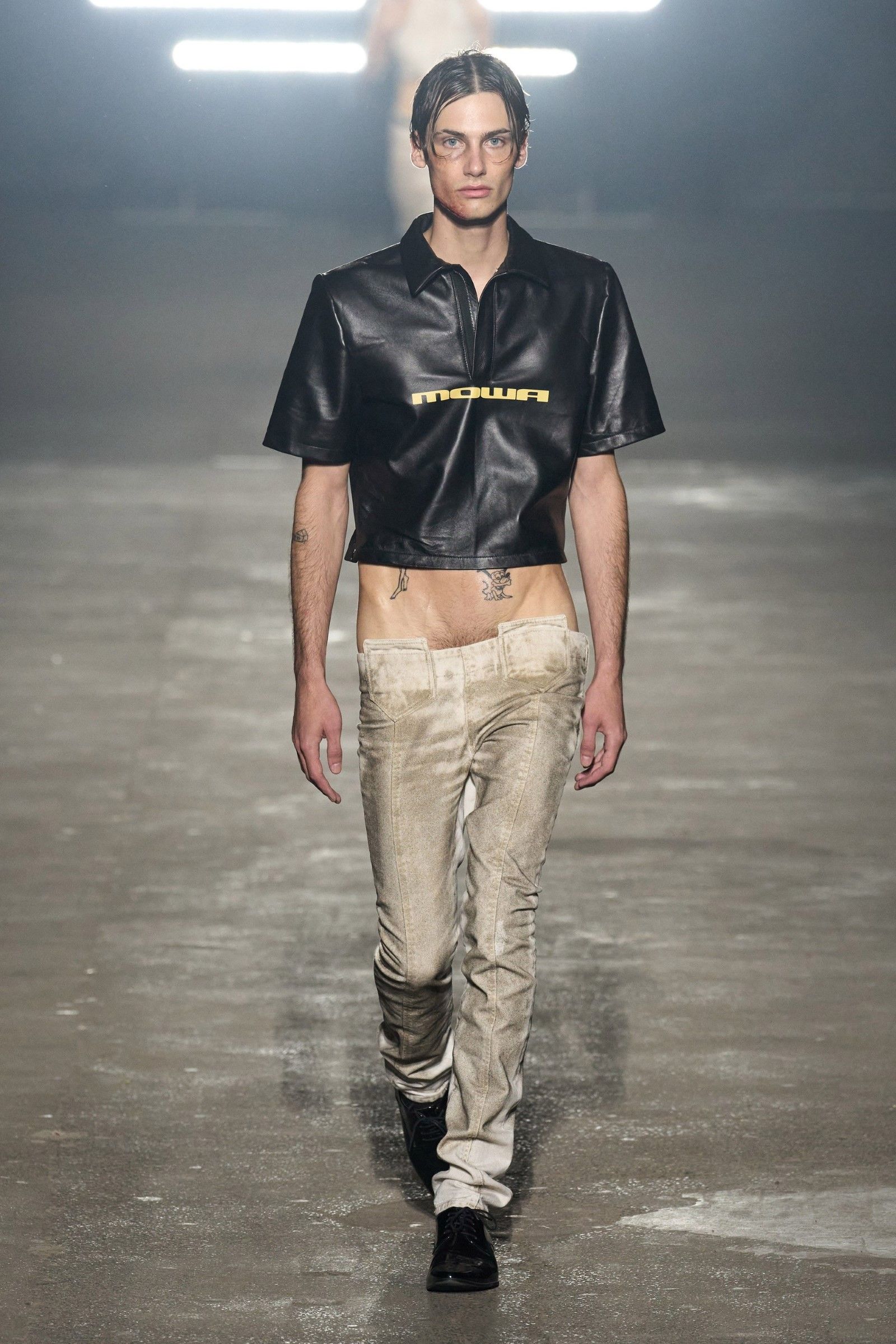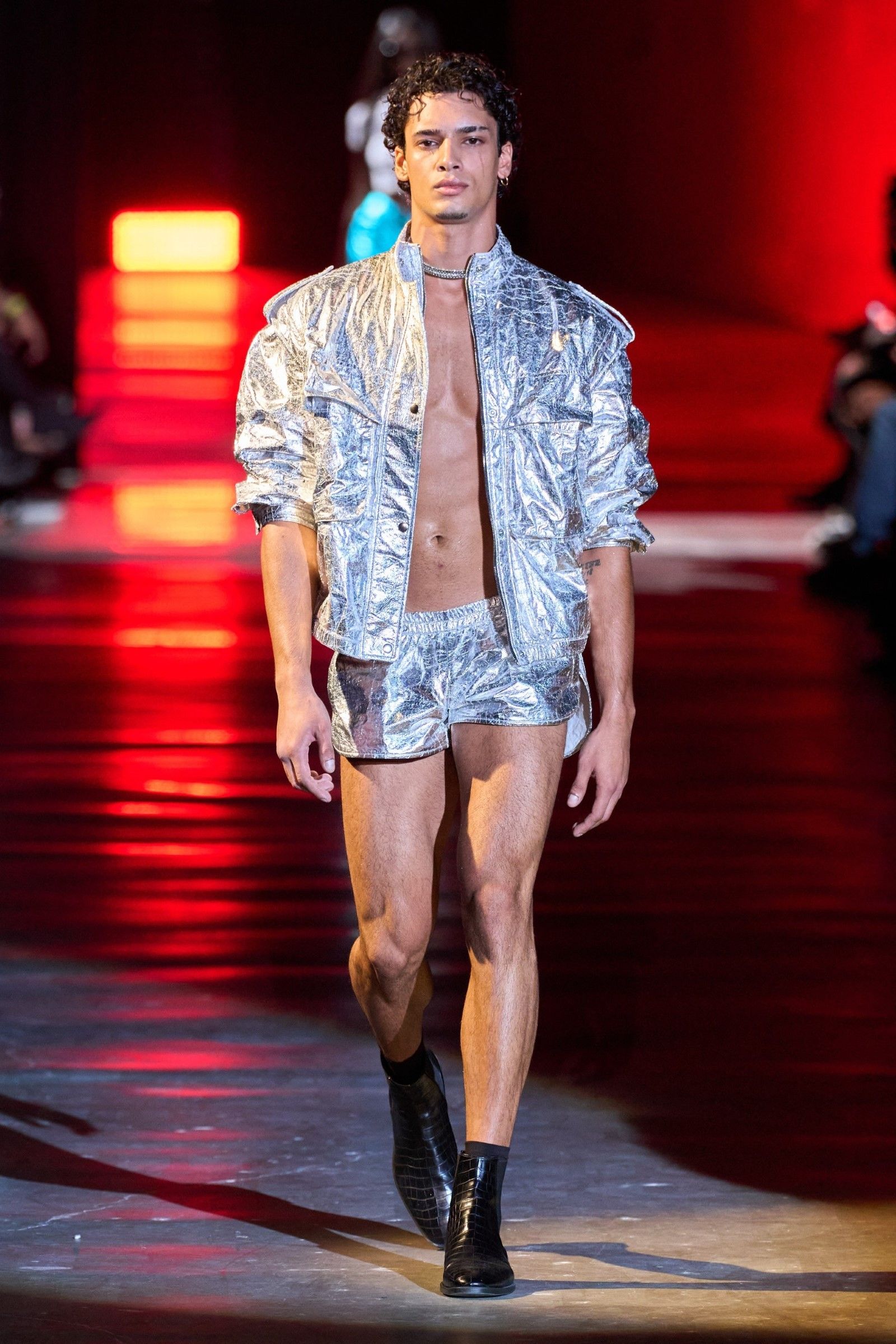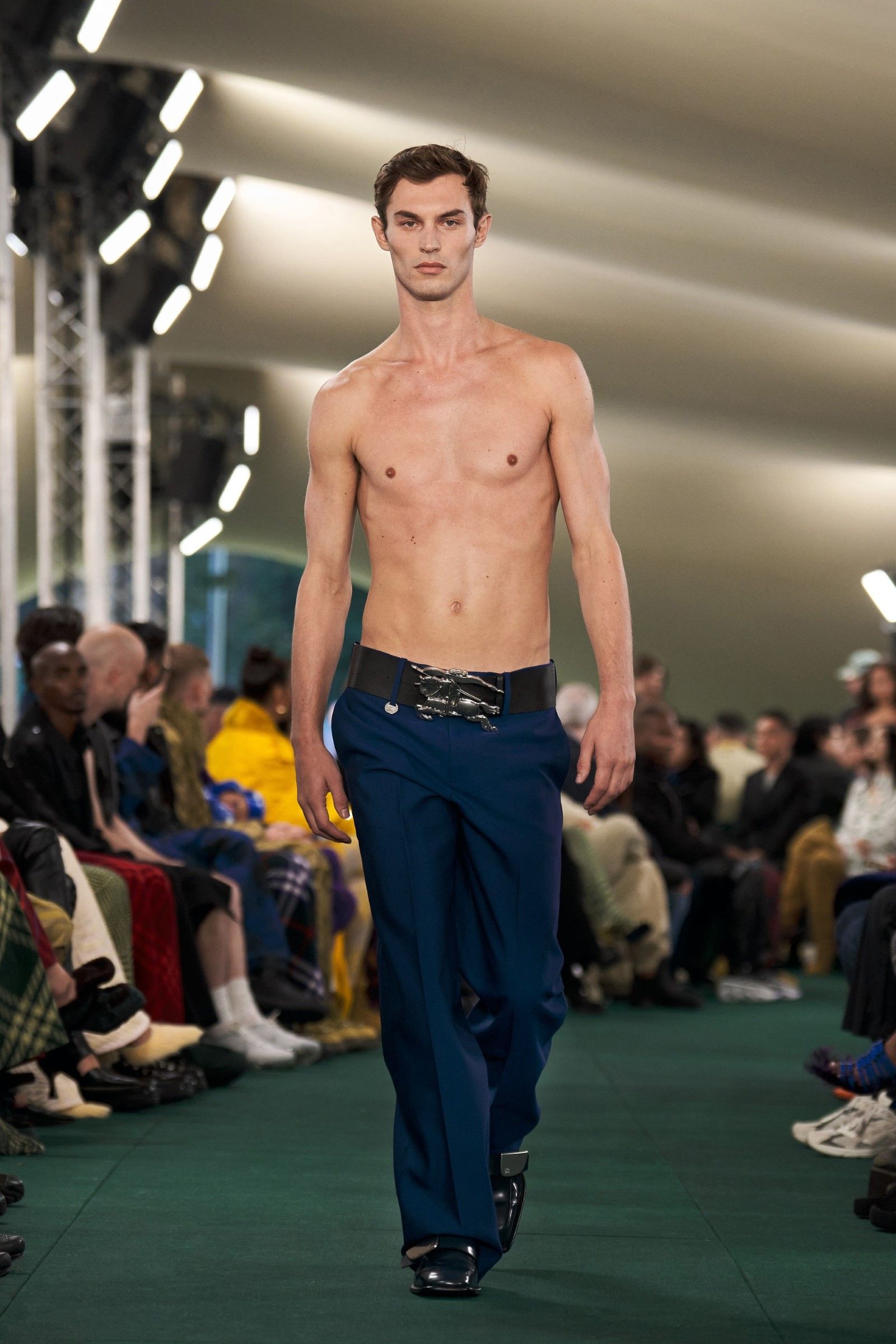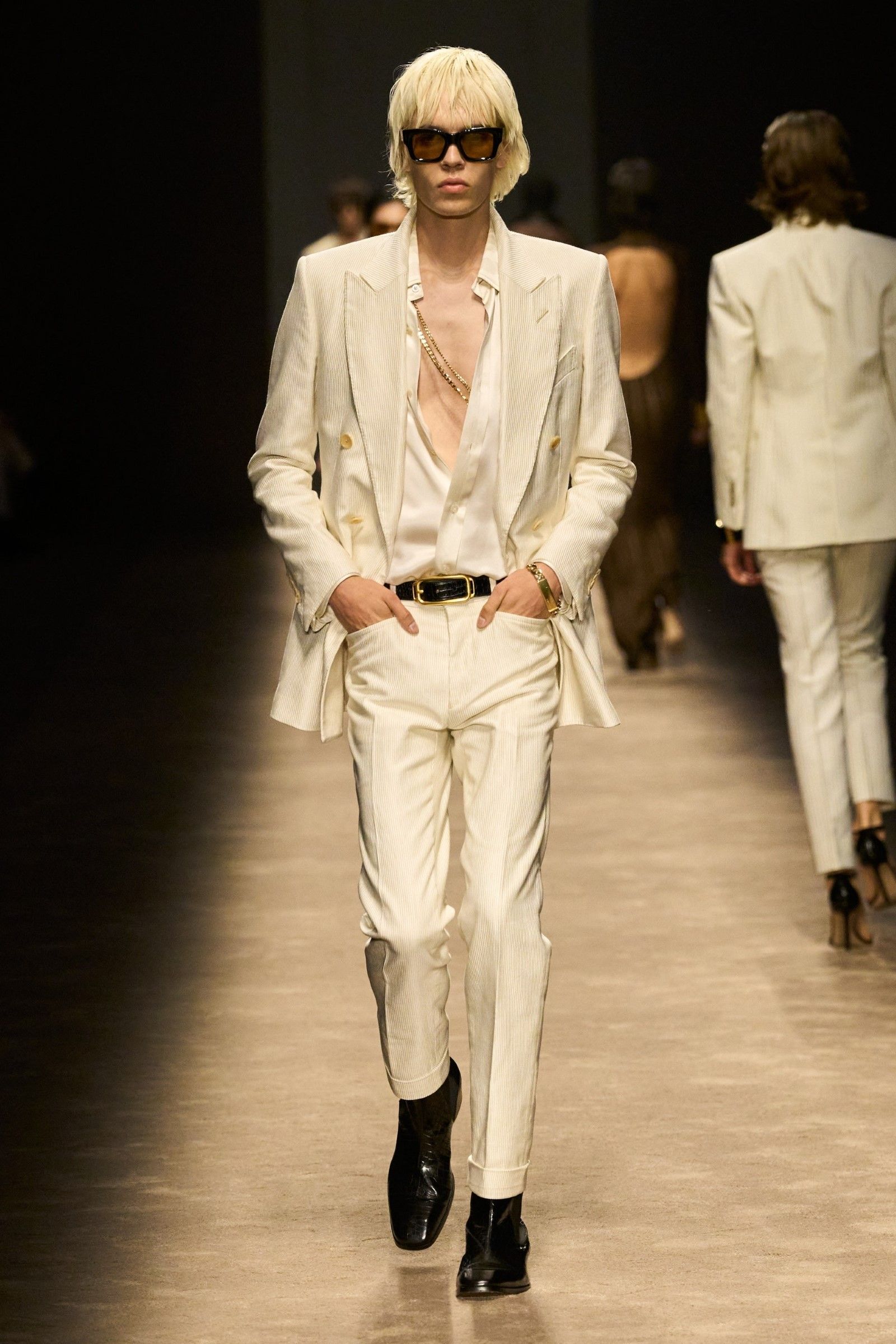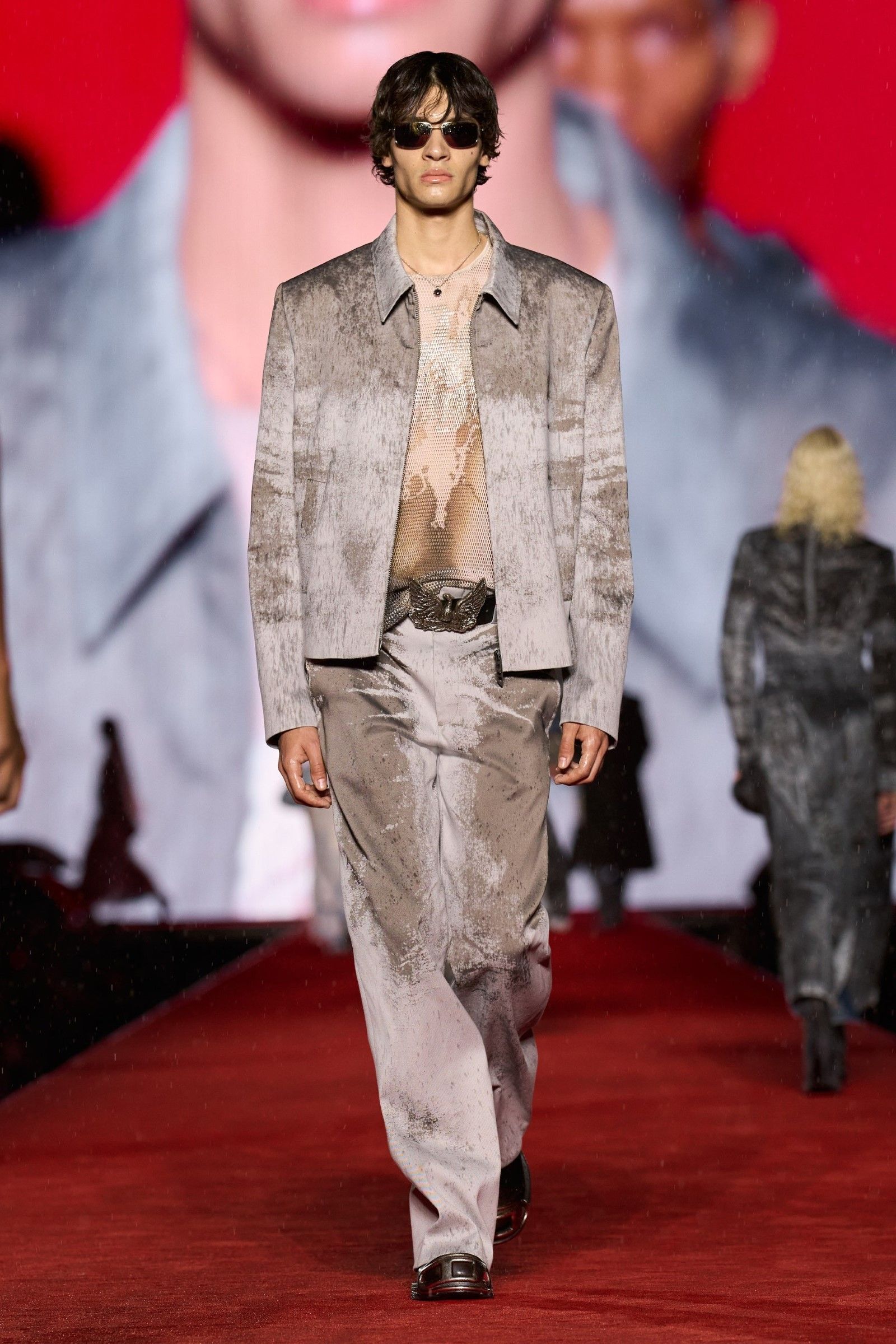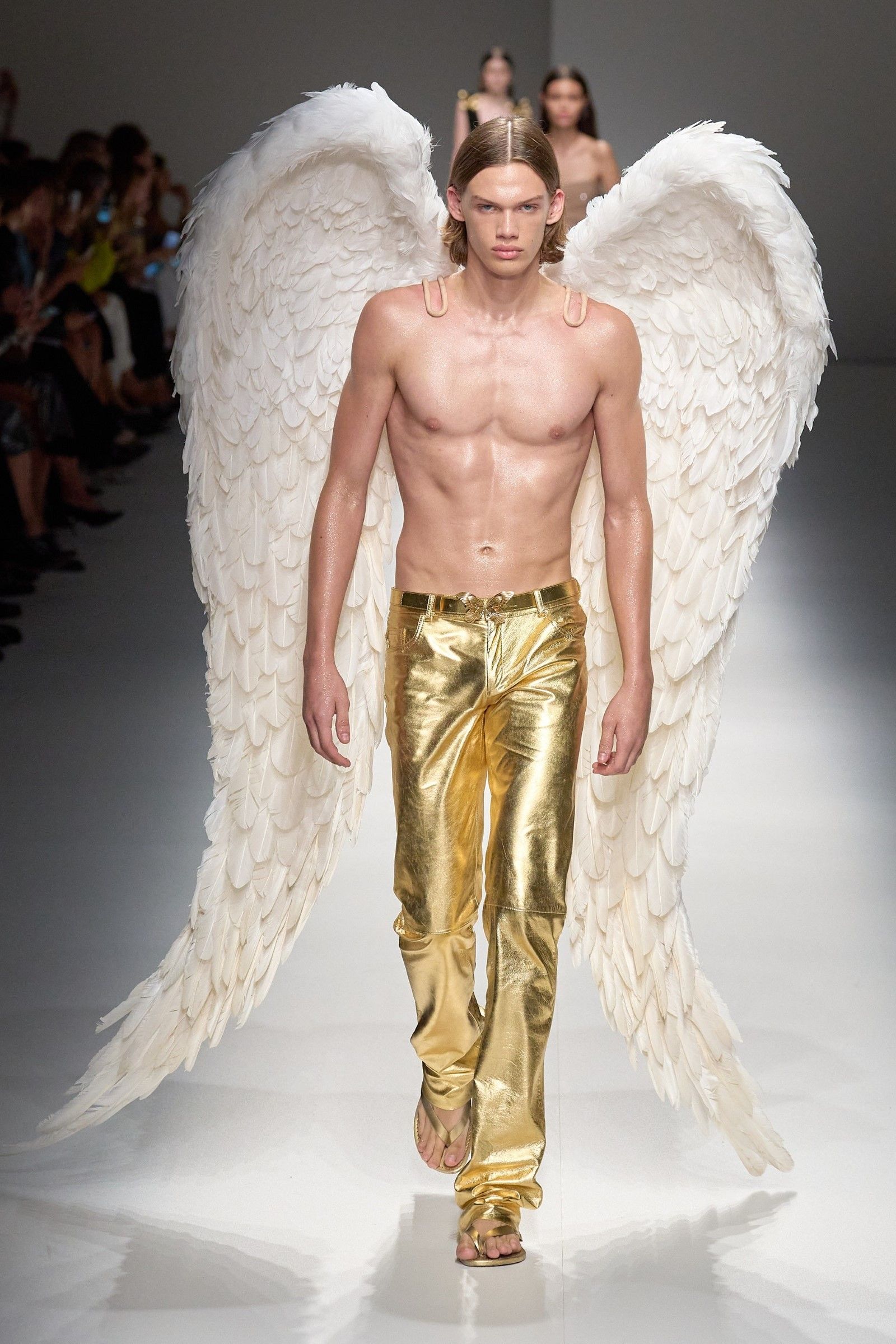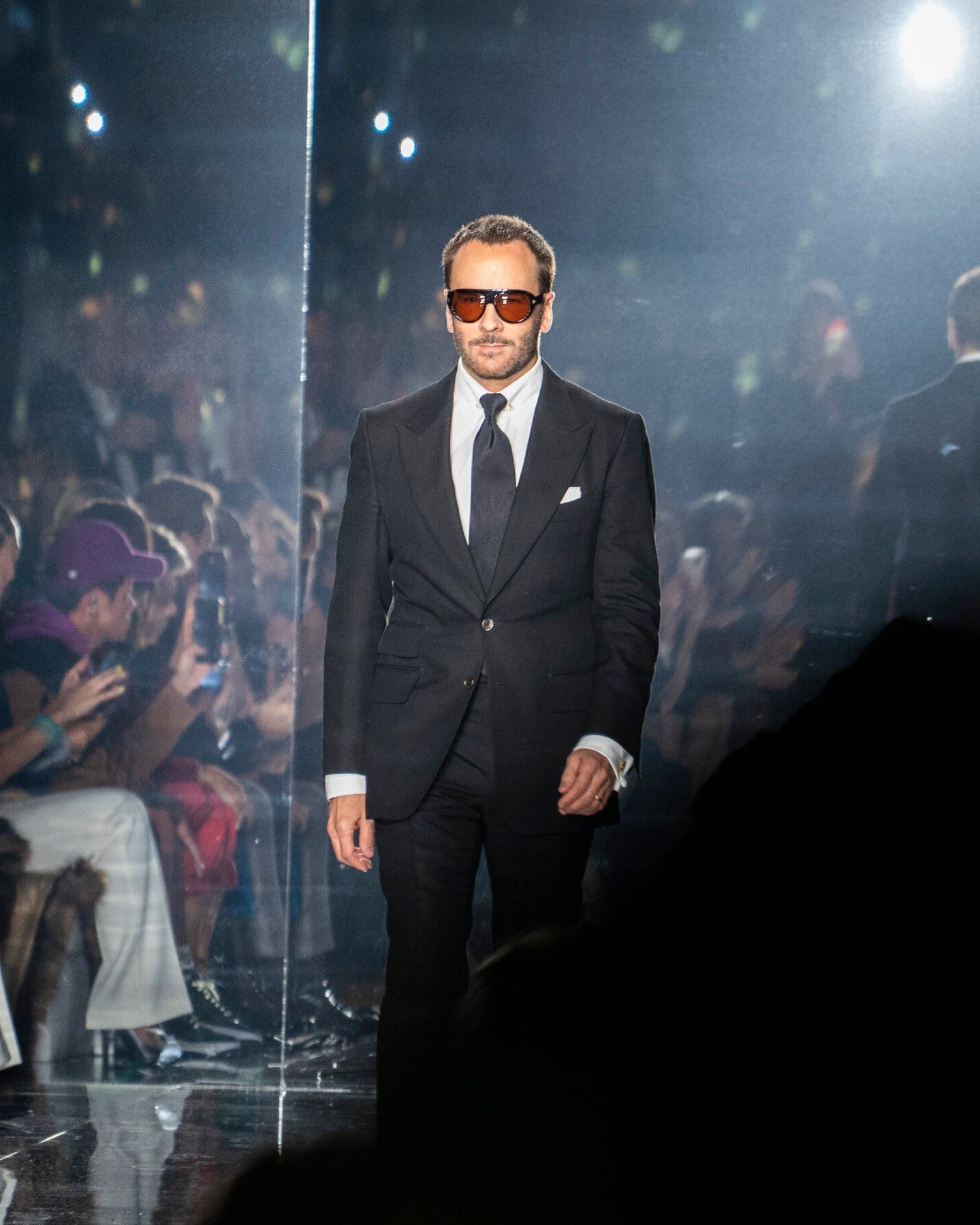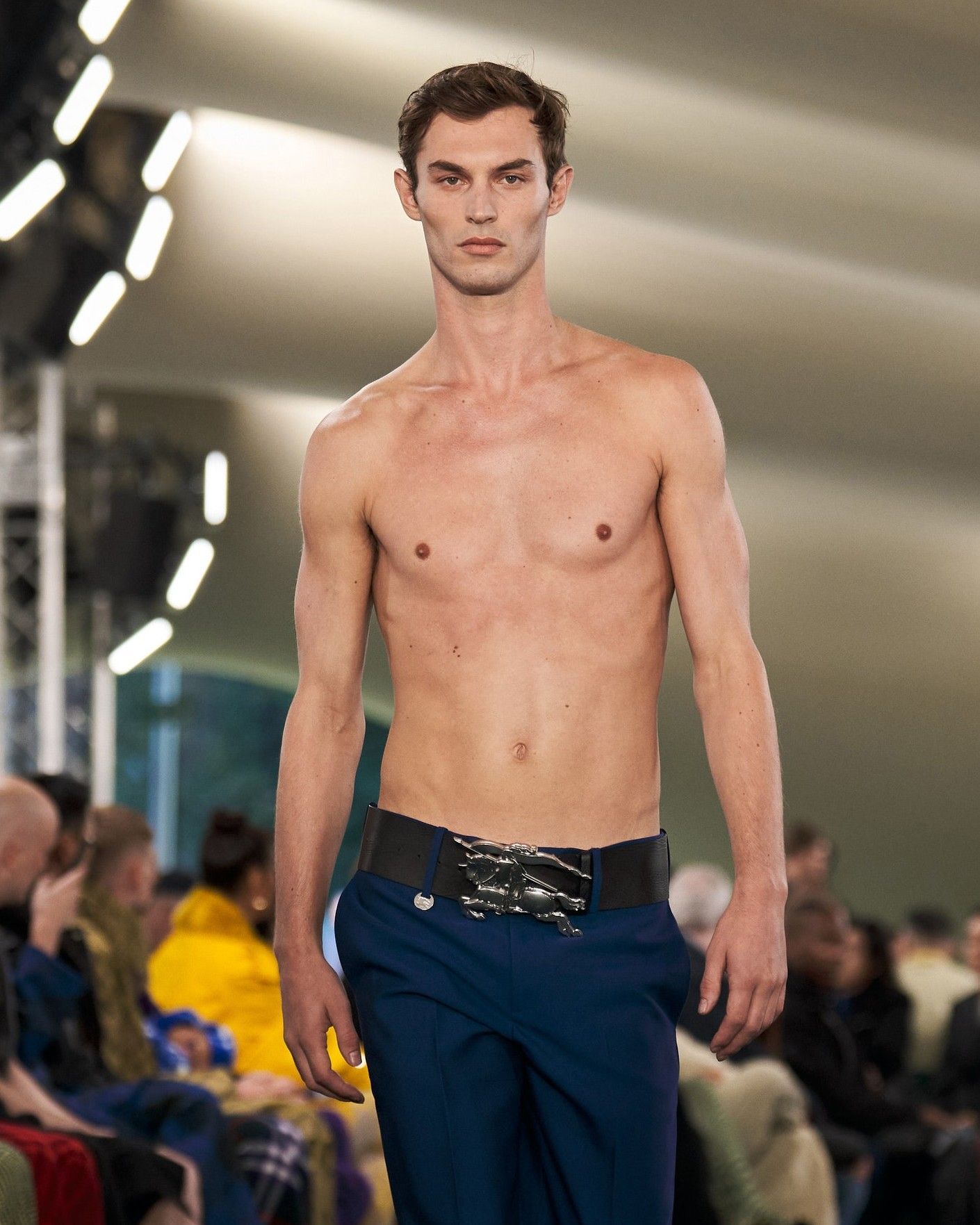
Does being naked mean being sexy? The eternal contradiction of narrating the male body
Last week, commenting on LaQuan Smith's latest New York show, Culted wrote a piece titled SS24 menswear is bringing sexy back. A title that begs the question: hadn't menswear already become "sexy" long ago? And how had it become so? In a perhaps trivial way, many menswear looks have become bolder because they are more revealing. But the problem here is that this idea of sexyness is not about shortened, low-cut, sleeveless clothes and so on; it is about the bodies that wear them. In a sense, it is as if the design of the clothes leaves it to the human body to evoke desire in a way that, to put it bluntly, is obtusely tending toward eroticism. Which is not a bad thing in itself; certain ways of uncovering the body can also tell more complex meanings-but these are used so heavily that they suggest a genre of clothing that we might call "thirst trap fashion": cheekily clothes created to be worn cheekily. A legitimate approach that, however, if totalizing, is reductive. Both because of the famous issues of body diversity and ageism into the merits of which there is really no need to go, and because of a perhaps less obvious but more pressing question of artistic and intellectual maturity. The issue, of course, also concerns sales: if there is undoubtedly a clientele for thirst trap fashion, there is a much larger and equally young and capable spending clientele that would instead appreciate more nuanced notions of sexyness capable of going beyond the banal undressing of the body. It is clear, however, that the two alternatives are not mutually exclusive.
But why call it "thirst trap fashion"? In a world where the gratuitous display and glorification of the female body has become loaded with so many political subtexts, bringing a far greater degree of attention to notions of objectification and male gaze, menswear designers have dedicated themselves to "liberating" the male body from rigid heteronormative conventions by denuding it. LaQuan Smith, for example, makes men sensual by putting them bare-chested, displaying the muscles of their torsos under a layer of transparent fabric. Eckhaus Latta brings to the catwalk a riot of abs, tight-fitting and transparent fabrics, and something similar is done by Palomo Spain. Meanwhile, in London, both Mowalola and Burberry men, while cultivating very different styles, cannot help but exhibit biceps and deltoids, leave hips and the most outrageously low areas of one's abdominal wall uncovered.Which is not problematic in itself but risks steering the collective notion of sensuality in a one-way direction that is very limiting to the self-expression that, at least in theory, fashion should foster. In his SS15 Rick Owens offered a perfectly perturbing example when, by uncovering only the groin of his models thanks to a suitably pierced tunic, he scandalized buyers and the press. Recently, on the other hand, at Diesel's SS24 show, a good portion of the men's looks were very "dressed up" and their muscularity was conveyed by the proportions and textures of the garments-no less there was no shortage of sheer tops, tank tops, and sleeveless suits but in smaller proportions as also at MM6 Maison Margiela where however that nudity served to animate the styling of very classic pieces; at Tom Ford, on the other hand, the silk shirts of many of the outfits were very low-cut but it was the materials and cuts that conveyed the sensuality, as also at Helmut Lang - you don't need to train a year at the gym to wear them plausibly.
Without wishing to focus only on the latest fashion shows, every fashion week is quite filled with exalted semi-nude bodies as a yardstick of how licit or illicit it is to present oneself. The intangible currency of fashion, even years later, remains desire - for luxury, for beauty, for wealth, for youth. Nor is it a coincidence that the world's oldest business rule is «Sex sells». Yet stripping "aspirational" bodies is not about making clothes sensual, only about increasing the desirability of bodies - as well as attracting the precious attention of the public, which is the primary fuel of sales. Which is not to say that there is not an art of styling in this regard as well (think of influencer Marlon Noah who has become quietly viral more for his own styling and visual identity than for his athletic physique, which in any case remains the premise of styling itself) but do you really need that much styling to enhance a conventionally beautiful body? The many displays of athletic physiques, the recent invasion of tank tops and sleeveless tops in men's fashion tells us that, in fact, a sculpted body is in many cases an adornment of itself. The prophecy of Rick Owens, who once said: «Working out is modern couture. No outfit is going to make you look or feel as good as having a fit body. Buy less clothing and go to the gym instead». But is it really possible that the entire world of male sensuality can be reduced to a gym membership and a flat stomach? Are men and their sexuality really a piano with only one key? And are the barrage of designers at work in the flood of brands that exist on the market today really a host of one-trick ponies capable only of drawing heavily from the modes of expression of the queer and BDSM subcultures? Surely that is the easiest way - but let us not forget that here we want to talk about the sensuality of clothes and not that of bodies, whose connection to human desire, in whatever form it takes, is something obvious and predictable.
The search for "clothed sensuality," then, is not meant to represent some sort of moralistic and castigating approach to male body expression, nor is it about such notions as decorum and good taste. Rather, it is about truly and intelligently exploring other and innovative avenues in the representation and self-representation of the menswear customer - somewhat like Jonathan Anderson did with Loewe's SS24 collection that reinvented a masculine silhouette that had become stale, or like Raf Simons did more than two decades ago with the skinny suit. In an age of commercial fashion flattening, where it seems impossible to find new outlets for a men's wardrobe in which no more unknown lands seem to lurk, solving the knot of male sexiness could perhaps be the hallmark of the innovator figure that the fashion system understood more as a cultural than a commercial industry so desperately needs.










































